12 Superfood Toppings That Make Oatmeal Healthier
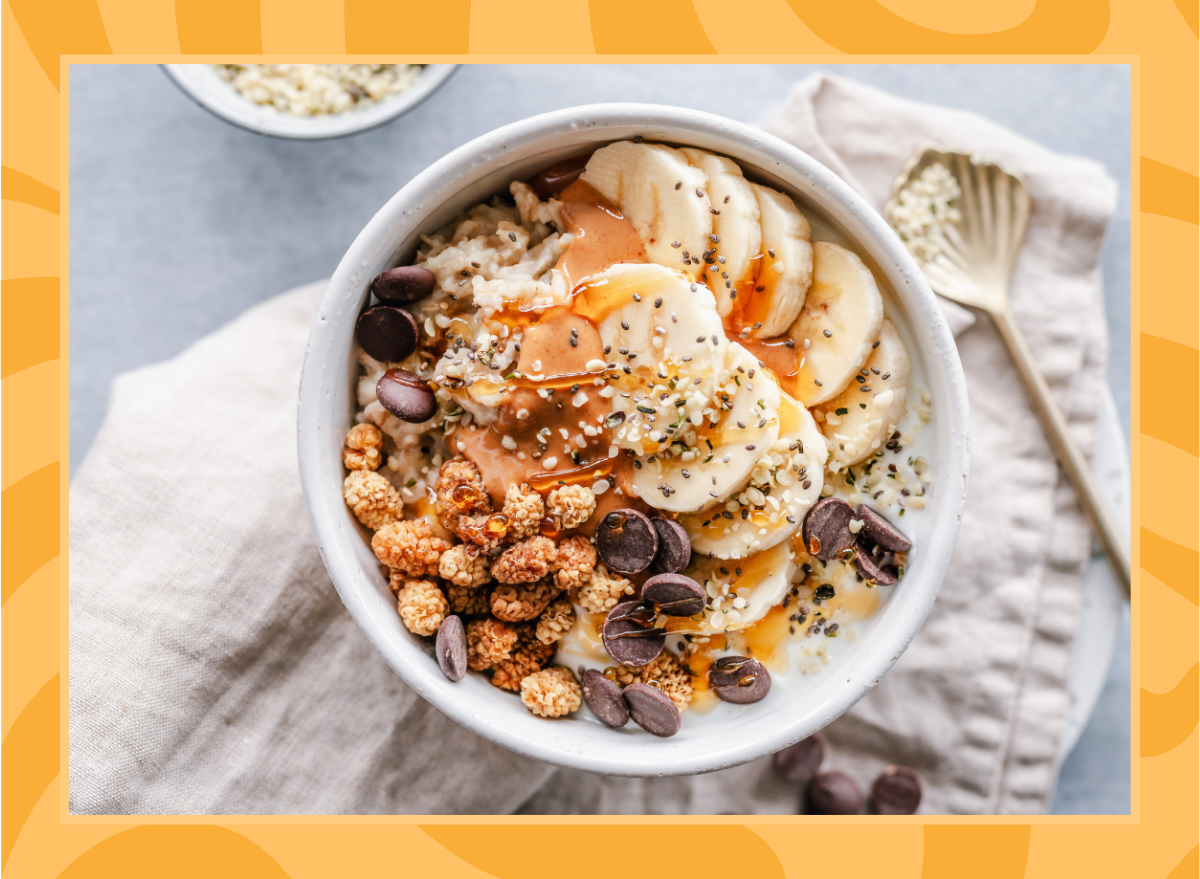
Oatmeal is a superfood in its own right. It's rich in heart-healthy soluble fiber, packed with vitamins and minerals, and is even a source of antioxidants like avenanthramides—phenolic compounds found almost exclusively in oats. Adding oatmeal toppings that are also superfoods can take your breakfast to the next level, making an already nutritious meal even healthier.
By incorporating nutrient-packed superfoods, you can boost your bowl with antioxidants, fiber, protein, and essential vitamins. Want to make your breakfast a veritable superhero of nutrients? Try any of these 12 options (or mix and match them as you please). For more breakfast ideas, check out 38 High-Protein Breakfasts That Keep You Full.
12 Healthy Oatmeal Toppings
- Walnuts
- Flaxseed Meal
- Blueberries
- Raisins
- Pomegranate Arils
- Chia Seeds
- Almond Butter
- Bananas
- Pistachios
- Raspberries
- Cinnamon
- Pumpkin Seeds
Walnuts
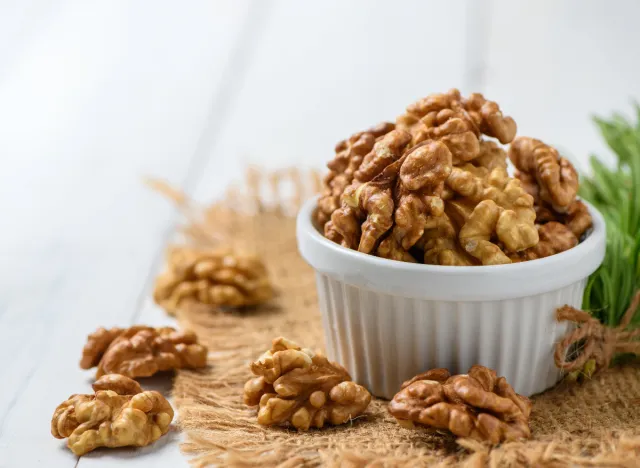
A bit of pleasant crunch always elevates oatmeal. Why not make your crunchy add-in a superfood like walnuts? These nuts are lil' nuggets of nutrition, with plenty of ALA omega-3s, a hint of fiber, and a respectable dose of protein in each serving. (A single ounce provides 4.3 grams.) Research has linked walnuts with cancer prevention as well as health benefits for the heart, brain, and gut.
Flaxseed Meal
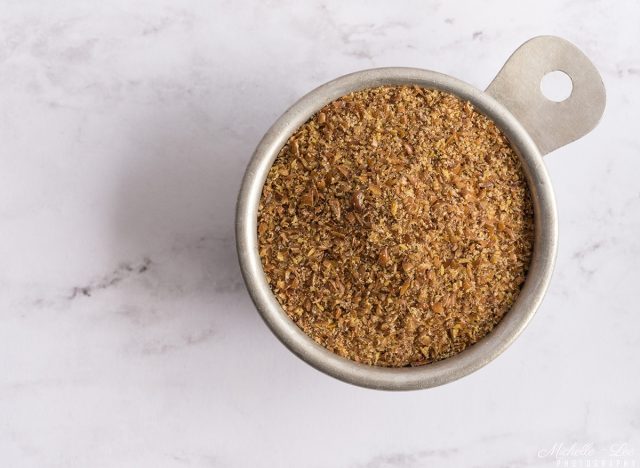
You wouldn't want to eat whole flaxseeds on your oatmeal—they're pretty tough to digest. But in ground form, these seeds make a powder that's just right for shaking onto oats. Use ground flaxseed to increase the hearty flavor and fiber content of your breakfast. (Each 2-tablespoon serving has 3 grams of fiber.)
By choosing flaxseed meal, you'll also fill up on ALA omega-3 fatty acids. ALAs may help reduce the risk of heart disease by lowering cholesterol and blood pressure. So grab that flaxseed bag and get shaking!
Blueberries
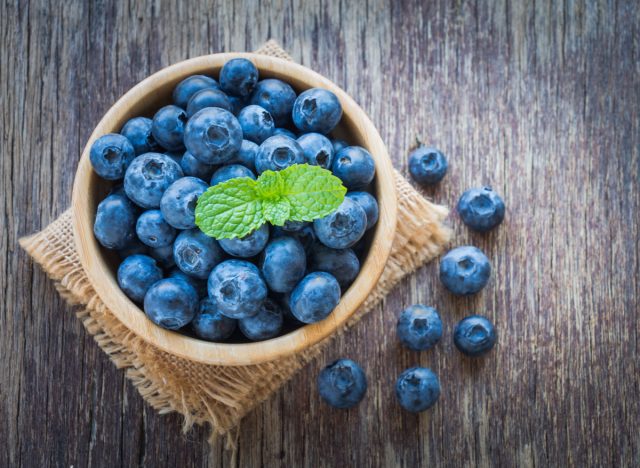
There's a reason blueberries seem to show up on every list of superfoods. They're one of the highest-antioxidant foods around. In fact, according to one study, 1 cup of these sweet fruits can contain over 9,000 antioxidants!
When sprinkling them atop your oatmeal, choose wild blueberries for even more antioxidants—and more fiber per serving, too. Since wild blueberries are smaller than cultivated ones, they have a higher skin-to-flesh ratio. The skin is where blueberries' antioxidants and fiber primarily lie.
Raisins
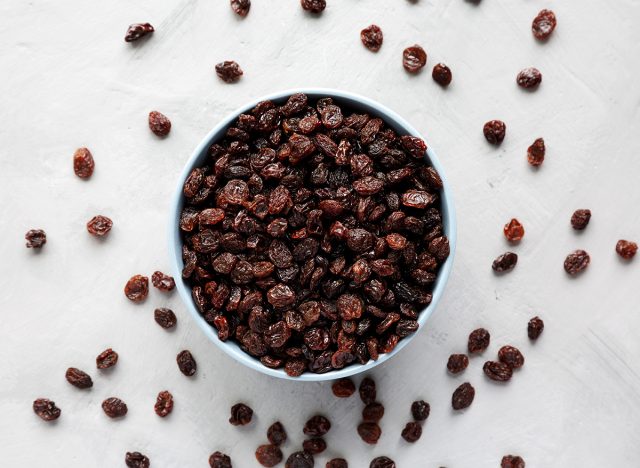
Raisins may be dense in calories and sugar, but that doesn't negate the fact that they're also high in fiber, potassium, and iron. A quarter-cup serving has nearly 3 grams of fiber and 10% of the Daily Value of potassium. Plus, their tender chewiness is a nice contrast to the smooth texture of oatmeal.
Try changing up your oats with the goodness of golden raisins. They have more flavonoids than darker raisins and are usually softer and chewier.
Pomegranate Arils
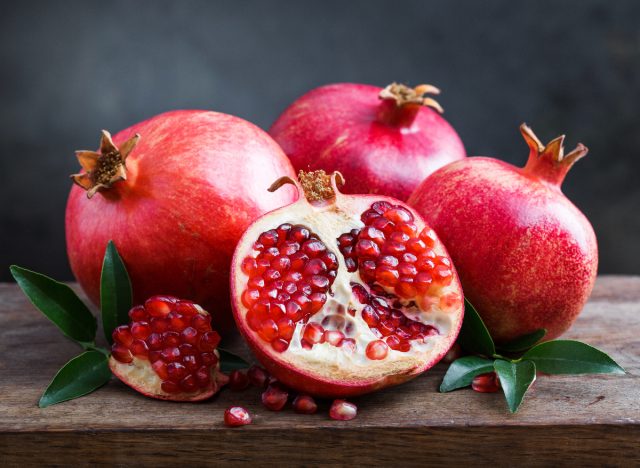
Speaking of crunch, don't pass up pomegranate seeds when they're in season. Their woody interior (surrounded by a gel-like outer layer) is just the thing for adding a pop of texture and color to oatmeal.
Pomegranate arils earn their reputation as a superfood with a foundation of nutrients like fiber, potassium, and vitamin C. But their power doesn't stop there! They're also loaded with an army of antioxidants, such as anthocyanins, ellagitannins, polyphenols, and punicalagins. Some researchers have called pomegranate the most antioxidant-rich food on earth.
Chia Seeds
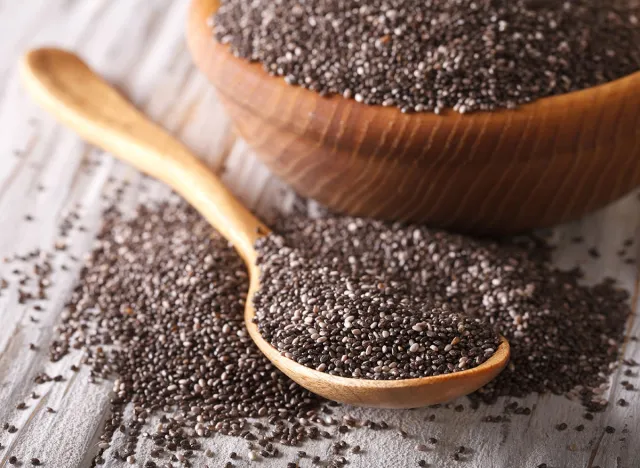
You might be used to popping chia seeds into a pudding (and hey, that's certainly not a bad use for them). But you can think outside the dessert box by tossing them onto your oatmeal, too. Chia seeds' combo of nutrients (like manganese, iron, copper, fiber, and omega-3s) could help reduce inflammation, lower blood pressure, support weight management, and improve digestive health. Talk about a multi-tasker!
Almond Butter
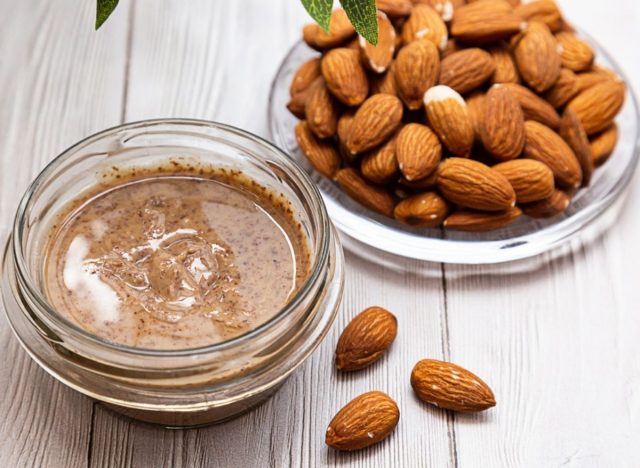
When you want an easy nutrition lift for your oatmeal, haul out the almond butter. It's a natural source of vitamin E, magnesium, and heart-healthy monounsaturated fats. Research shows it's also a great choice for blood sugar management. And since it swirls beautifully into oatmeal, almond butter makes pretty, Insta-worthy creations you'll love to look at as well as eat.
Bananas
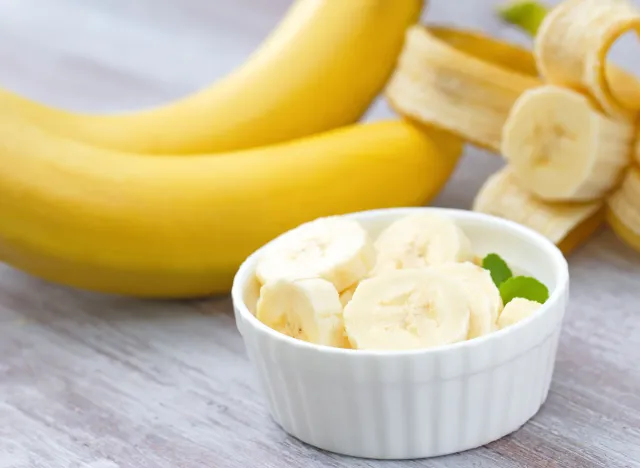
It's easy to overlook the bananas sitting on your kitchen counter, but don't pass them by. They're a treasure trove of nutrients. Besides their famous potassium content, 'nanners contain several types of antioxidants, including flavonoids and amines. These antioxidants are linked to health benefits like fighting breast and pancreatic cancer. For both health and flavor, you can feel good about slicing up this classic oatmeal topping.
Pistachios
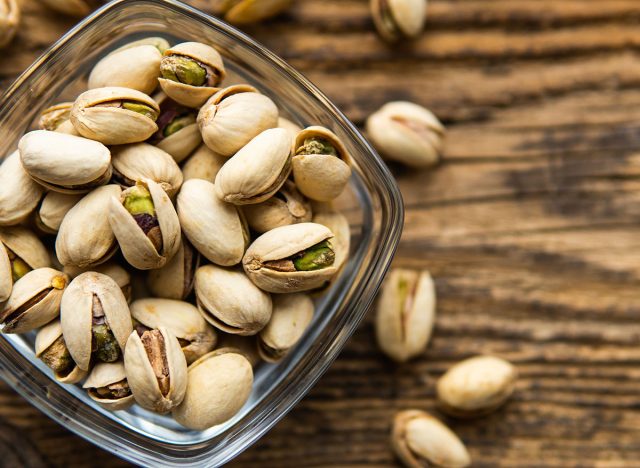
For such a small nut, pistachios sure do pack a lot of nutrition. In each little green kernel, you'll find potassium, phosphorus, magnesium, calcium, and vitamins like vitamin A, vitamin E, vitamin C, vitamin K, and B vitamins.
Pistachios also pump up your oatmeal with extra protein. Each 49-nut serving contains about 6 grams (nearly as much protein as an egg). In 2020, it was also confirmed that pistachios provide complete protein—the kind that contains all the essential amino acids our bodies must get from food.
Raspberries
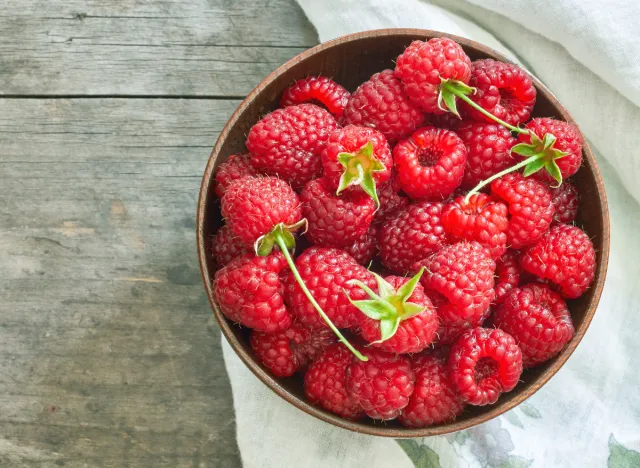
Raspberries join blueberries under the umbrella of fruits you can count on as a superfood oatmeal topping. Just like their blue counterparts, these red berries are chock full of antioxidants, not to mention vitamin C and fiber. Pair them with a dusting of dark chocolate or your favorite nuts—or both!—for an even more powerful superfood boost.
Cinnamon
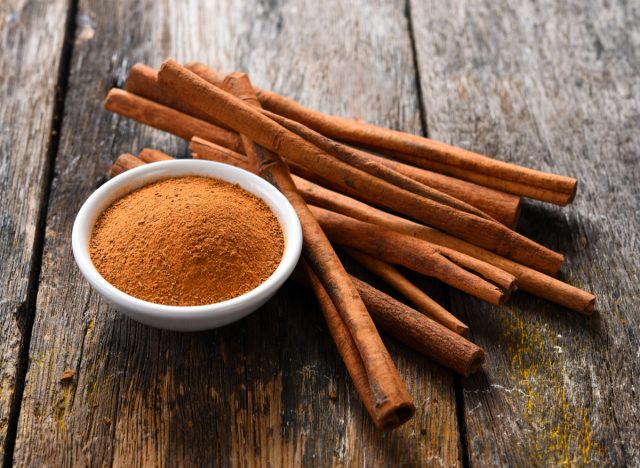
Cinnamon was once so valuable it was used as currency—and that's before people knew about its health benefits! The earthy spice is known for its anti-inflammatory properties, which may help bring down blood sugar and cholesterol. Be generous when shaking some onto your oatmeal. One study found that a dosage of 1.5 grams (or about ¾ teaspoon) was effective for health benefits.
Pumpkin Seeds
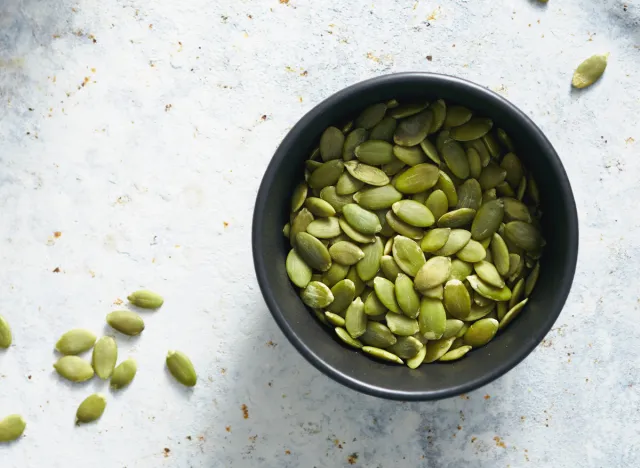
Pumpkin seeds are famous in fall recipes, but their ample nutrition is available all year long. Sprinkle them as an oatmeal topping for a major magnesium upgrade (which might help maintain healthy blood pressure). Then give thanks for the fiber and antioxidants that round out their superfood profile.
- Source: https://fdc.nal.usda.gov/food-details/2601097/nutrients
- Source: https://www.mountsinai.org/health-library/supplement/alpha-linolenic-acid
- Source: https://pubmed.ncbi.nlm.nih.gov/15186133/
- Source: https://extension.umaine.edu/blueberries/factsheets/quality/wild-blueberry-concentrations-antioxidants-vitamins-and-minerals/
- Source: https://fdc.nal.usda.gov/food-details/168166/nutrients
- Source: https://www.uclahealth.org/news/article/health-benefits-of-pomegranates-extend-throughout-the-body
- Source: https://www.health.harvard.edu/nutrition/chia-seed-benefits-what-you-need-to-know
- Source: https://pmc.ncbi.nlm.nih.gov/articles/PMC8264510/
- Source: https://www.ncbi.nlm.nih.gov/pmc/articles/PMC6400781/
- Source: https://pmc.ncbi.nlm.nih.gov/articles/PMC8907754/
- Source: https://fdc.nal.usda.gov/food-details/170184/nutrients
- Source: https://americanpistachios.org/complete-protein
- Source: https://pmc.ncbi.nlm.nih.gov/articles/PMC9914695/
- Source: https://health.clevelandclinic.org/benefits-of-cinnamon
- Source: https://pubmed.ncbi.nlm.nih.gov/33739219/
- Source: https://www.health.harvard.edu/heart-health/seed-of-the-month-pumpkin-seeds









